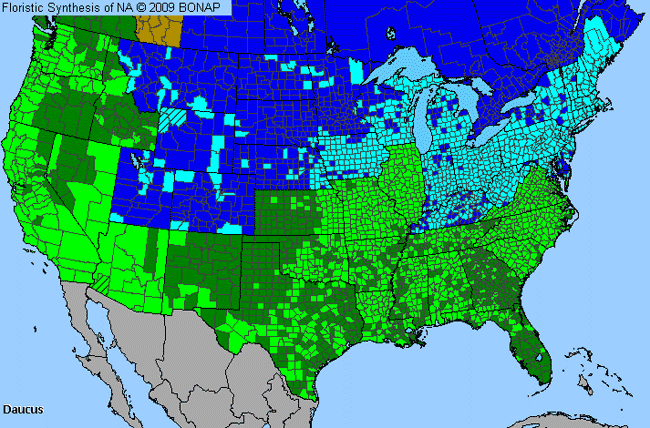Queen Anne's-Lace, Wild Carrot (Daucus)

Queen Anne's-Lace, Wild Carrot Genus Details

Queen Anne's Lace, also called wild carrot, is a biennial with a bristly stem. The umbrel flowers are white and very lacy-looking with a little dark purple flower in the center. The flowers bloom from July to September. When the flower cluster withers, it curls and becomes nest shaped. This plant grows to be 2-4 feet tall. It was introduced from Europe and naturalized in fields and waste places. Herbalists use this plant as an extract or tea which is then used as a stimulant or diuretic. In the past, women have used the seeds as a contraceptive.
Queen Anne's-Lace, Wild Carrot Allergy Info

Queen Anne's Lace is primarily insect-pollinated, but local cases of pollinosis have been reported in people living near heavily-infested fields.
Queen Anne's-Lace, Wild Carrot Pollen Description

Grains are perprolate to prolate, cylindrical or slightly constricted at the equator; the amb rounded-triangular and 3-colporate; the colpi very narrow and long.
Grains are usually 25-30 micrometers in diameter.
Species in This Genus

Allergenicity Legend:
 Mild Allergen |
Mild Allergen |
 Moderate Allergen |
Moderate Allergen |
 Severe Allergen |
Severe Allergen |
 Allergy Test Available
Allergy Test Available
Queen Anne's-Lace, Wild Carrot (Daucus) is a genus of the APIACEAE family.
This genus includes the following allergenic species:
This genus includes the following allergenic species:













